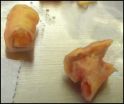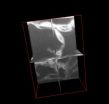(Press-News.org) WEST LAFAYETTE, Ind. – Purdue University researchers who developed a new approach to more effectively teach large numbers of engineering students are recommending that the approach be considered for adoption by universities globally.
The system, called the Purdue Mechanics Freeform Classroom, allows students to interact with each other and faculty online while accessing hundreds of instructional videos and animations. It was pioneered by Charles Krousgrill, a professor of mechanical engineering, and has been used for more than two years in two mechanical engineering core courses with hundreds of students enrolled annually.
"Data analysis shows that the students are really engaging our materials, and it is having a marked effect on student performance," said Krousgrill, who is working with Jeffrey Rhoads an associate professor of mechanical engineering, Eric Nauman, a professor of mechanical engineering, and Beth Holloway, assistant dean for undergraduate education in Purdue's College of Engineering. "We'd really like to see this expand beyond the borders of Purdue and are working now to make it happen."
The teaching approach addresses the challenges of educating large core-engineering classes, which have seen increasing student enrollment in recent years, and has significantly reduced the number of students who receive a grade of D; or who drop, fail or withdraw from the courses (DFW).
The new approach is detailed in a research paper being presented during the American Society for Engineering Education Annual Conference and Exposition in Indianapolis on June 15-18. The paper was authored by Rhoads, Krousgrill, Nauman and Holloway, who also is director of the Purdue Women in Engineering Program.
The system includes highly interactive course blogs and has been implemented for five semesters in Basic Mechanics I - an introductory course in statics and strength of materials - and seven semesters in Basic Mechanics II - an introductory course in dynamics and mechanical vibration.
New findings indicate that the rate of students receiving a D, fail or withdraw from courses has been substantially reduced since its implementation. The DFW rate in Basic Mechanics I was 32 percent in the fall semester of 2008 and 18 percent in the fall semester of 2013. Likewise, the DFW rate in Basic Mechanics II was 21 percent in the spring semester of 2009 and 11 percent in the spring semester of 2013.
"With continued development and expansion we hope that the Purdue Mechanics Freeform Classroom can be adopted at colleges and universities across the globe, rendering a positive and uniform mechanics education experience for all," Rhoads said.
A key driving force to developing the system was the need to educate more students, while also providing deeper knowledge.
"When you have more than 100 students in a classroom, you need to find a creative solution, you no longer have direct access to students," Krousgrill said. "Anecdotally speaking, typical lecture attendance appears to have actually increased with the implementation of the Purdue Mechanics Freeform Classroom to approximately 85-95 percent, compared to the approximately 70 percent seen prior to implementation. Interestingly, instructors commonly report that the quality of in-class discussions and student engagement has increased as well."
The approach also might be used for any large STEM-related courses.
One obstacle, however, to its widespread adoption is resistance from faculty.
"Despite the seemingly positive impact on student performance and outcomes, there remain key challenges for broader implementation, most of which are strongly tied to faculty buy-in," Nauman said.
INFORMATION:
Writers: Emil Venere, 765-494-4709, venere@purdue.edu
Sources: Charles Krousgrill, 765-494-5738, krousgri@purdue.edu
Jeffrey Rhoads, 765-494-5630, jfrhoads@purdue.edu
Eric Nauman, 765-494-8602, enauman@purdue.edu
Beth Holloway, 765-494-0274, holloway@purdue.edu
PHOTO CAPTION:
Jeffrey Rhoads, left, and Charles Krousgrill are using a new teaching approach for large classes that allows students to interact with each other and faculty online while accessing hundreds of instructional videos and animations. Krousgrill, a professor of mechanical engineering, pioneered the system, called the Purdue Mechanics Freeform Classroom. (Purdue University photo/Mark Simons)
A publication-quality photo is available at http://www.purdue.edu/uns/images/2013/krousgrill-freeform.jpg
ABSTRACT
The Purdue Mechanics Freeform Classroom: A New Approach to Engineering Mechanics Education
Jeffrey F. Rhoads, Eric Nauman, Beth M. Holloway, and Charles M. Krousgrill
Purdue University
Motivated by the need to address the broad spectrum of learning styles embraced by today's engineering students, a desire to encourage active, peer-to-peer, and self-learning, and a goal of interacting with every student despite ever-expanding enrollments, the mechanics faculty at Purdue University have developed the Purdue Mechanics Freeform Classroom (PMFC) – a new approach to engineering mechanics education. This complete, yet evolving, course system, implemented to date in two courses: ME 27000: Basic Mechanics I (an introductory-level course in engineering statics, which serves students in numerous engineering disciplines) and ME 27400: Basic Mechanics II (an introductory-level course in dynamics and mechanical vibration, which serves students primarily in mechanical engineering), seeks to combine the more successful elements of the traditional classroom with new hybrid textbooks, extensive multimedia content, and web2.0 interactive technologies to create linked physical and virtual learning environments that not only appeal to students, but markedly improve their technical competency in foundational engineering technical areas.
New teaching approach touted for engineering education
2014-06-10
ELSE PRESS RELEASES FROM THIS DATE:
Virginia Tech architect reveals 'green roofs' need not go to great depths to work
2014-06-10
Hot town, summer in the city — it's nothing new, but ways to handle the heat, humidity, and stormwater haven't changed much since the invention of the sewer system.
One solution offered by architectural researchers is known as a "green roof" — a roof covered in living, growing plants to soften the effects of heat, flooding, noise, and stormwater runoff.
Elizabeth J. Grant, an assistant professor of architecture and design at Virginia Tech, will present ways for architects to determine the most effective depths of green roofing for stormwater control on Thursday at the ...
Scientific breakthrough: International collaboration has sequence salmon genome
2014-06-10
Vancouver, BC - Today the International Cooperation to Sequence the Atlantic Salmon Genome (ICSASG) announced completion of a fully mapped and openly accessible salmon genome. This reference genome will provide crucial information to fish managers to improve the production and sustainability of aquaculture operations, and address challenges around conservation of wild stocks, preservation of at-risk fish populations and environmental sustainability. This breakthrough was announced at the International Conference on Integrative Salmonid Biology (ICISB) being held in Vancouver ...
MRI shows brain abnormalities in late preterm infants
2014-06-10
OAK BROOK, Ill. – Babies born 32 to 36 weeks into gestation may have smaller brains and other brain abnormalities that could lead to long-term developmental problems, according to a new study published online in the journal Radiology.
Much of the existing knowledge on preterm birth and brain development has been drawn from studies of individuals born very preterm, or less than 32 weeks into gestation at birth.
For the new study, researchers in Australia focused on moderate and late preterm (MLPT) babies —those born between 32 weeks, zero days, and 36 weeks, six days, ...
Bacteria help explain why stress, fear trigger heart attacks
2014-06-10
WASHINGTON, DC – June 10, 2014 - Scientists believe they have an explanation for the axiom that stress, emotional shock, or overexertion may trigger heart attacks in vulnerable people. Hormones released during these events appear to cause bacterial biofilms on arterial walls to disperse, allowing plaque deposits to rupture into the bloodstream, according to research published in published today in mBio®, the online open-access journal of the American Society for Microbiology.
"Our hypothesis fitted with the observation that heart attack and stroke often occur following ...
Fox Chase doctors urge caution over new analysis of Medicare payments
2014-06-10
PHILADELPHIA, PA (June 9, 2014)—There's much to learn from the recent release of unprecedented amounts of data from the nation's second largest health insurer, Medicare, but only if interpreted cautiously, write two doctors at Fox Chase Cancer Center in the June 9 online edition of the Annals of Internal Medicine.
In April, the Centers for Medicare and Medicaid Services (CMS) released the most detailed data in its history, related to $77 billion worth of physician billings to Medicare. In its analysis of the data, The New York Times showed that only a small percentage ...
Lifetime cancer risk from heart imaging low for most children; rises with complex tests
2014-06-09
DURHAM, N.C. -- Children with heart disease are exposed to low levels of radiation during X-rays, which do not significantly raise their lifetime cancer risk. However, children who undergo repeated complex imaging tests that deliver higher doses of radiation may have a slightly increased lifetime risk of cancer, according to researchers at Duke Medicine.
The findings, published June 9, 2014, in the American Heart Association journal Circulation, represent the largest study of cumulative radiation doses in children with heart disease and associated predictions of lifetime ...
'Jekyll and Hyde' protein linked to type 1 diabetes
2014-06-09
Researchers are a step closer to establishing the link between a protein with a split personality and type 1 diabetes.
New research, published today in the journal PNAS, shows how a protein, called GAD65, changes its shape when it turns itself on and off. Curiously, this characteristic may also link it to type 1 diabetes.
In the human brain, GAD65 performs an essential role: it makes 'neurotransmitters' - chemicals that pass messages between brain cells.
GAD65 is also found in the pancreas. Previous studies linked it to type 1 diabetes because the body makes antibodies ...
Mount Sinai researchers identify protein that keeps blood stem cells healthy as they age
2014-06-09
(New York – June 9, 2014) -- A protein may be the key to maintaining the health of aging blood stem cells, according to work by researchers at the Icahn School of Medicine at Mount Sinai recently published online in Stem Cell Reports. Human adults keep stem cell pools on hand in key tissues, including the blood. These stem cells can become replacement cells for those lost to wear and tear. But as the blood stem cells age, their ability to regenerate blood declines, potentially contributing to anemia and the risk of cancers like acute myeloid leukemia and immune deficiency. ...
Viewing plant cells in 3-D (no glasses required)
2014-06-09
VIDEO:
This shows 3-D ortho-rotation of leaf mesophyll cells. Micrographs were collected by milling fixed tissue accompanied by SEM imaging using FIB-SEM. The complete videos published with the article are available...
Click here for more information.
Plant cells are beginning to look a lot different to Dr. A. Bruce Cahoon and his colleagues at Middle Tennessee State University (MTSU). They've adopted a new approach that combines the precision of an ion beam with the imaging ...
Needle biopsy underused in breast cancer diagnosis, negatively impacting diagnosis and care
2014-06-09
Needle biopsy, the standard of care radiological procedure for diagnosing breast cancer, is underused with too many patients undergoing the more invasive, excisional biopsy to detect their disease, according to research from The University of Texas MD Anderson Cancer Center.
The study, published in the Journal of Clinical Oncology, also finds that patients are often influenced by surgeons to undergo the unnecessary surgery -- a decision that's costly and can negatively impact their diagnosis and treatment.
A needle biopsy is a non-surgical procedure typically performed ...




